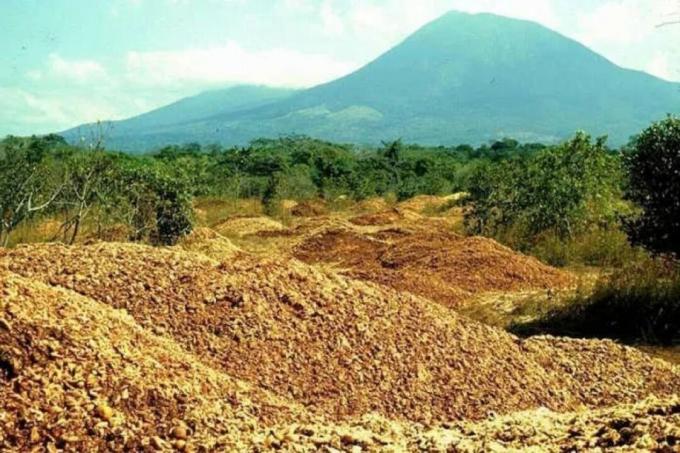A few years ago, ecologists made a discovery that shocked and, at the same time, brought great hope to the international scientific community.
In 1998, a Costa Rican juice company received authorization to dispose of waste from its production in the Guanacaste Conservation Area, a national park located in the Caribbean country.
see more
Bride bleeds after groom throws entire cake in her face
After entering college, Brad Pitt's daughter drops her last name...
To receive authorization, the company committed to donating one of its wooded areas to the public authorities.
However, the interesting thing about this whole story is that the area in which the company was authorized to depositing waste from its production was dry and deforested, even though it was in the middle of a pocket of forest virgin.
In total, the company dumped just over 12 tons of orange peel, fruit pomace and other waste.

Original deposit. (Image: disclosure)
At the time, ecologists Daniel Janzen and Winnie Hallwachs followed the entire process and took the opportunity to conduct a study.
The scholars went to the site, observed the disposal and left the place, which was left without visitors for many years.
Approximately 17 years later, in 2015, Daniel Janzen tasked graduate student Timothy Treuer with visiting the original site where the tailings disposal occurred in 1998. What Treuer found was something “scary”!
What happened to the disposal area?
At first, Timothy Treuer was unable to even find the place where the company had disposed of waste from juice production.
According to Treuer, this fact immediately scared him, because, according to Daniel Janzen and Winnie Hallwachs, the area was marked with a large, bright sign.
However, when consulting Janzen, Timothy obtained other information that would serve him in the future in the search for the lost deposit.
After receiving further guidance, the student returned to the site and finally found the area where the waste was deposited.
In his report, Treuer says he doesn't understand how an area could change so much. “It was like leaving overnight,” he said.
“It was hard to believe that the only difference between the two areas was a bunch of orange peels. They look like completely different ecosystems,” he added.
A new place emerged from the waste
In the years following the rediscovery of the ancient deposit, Timothy Treuer and a group of colleagues at the University of Princeton conducted studies at the site and discovered even more interesting aspects about how the place has changed. suffered.
First of all, they discovered the place where the signpost was. According to the students, the object was completely “swallowed” by dense, abundant and invasive vegetation.
The researchers also found that the site's soil became rich in minerals, and local biodiversity experienced a significant increase.
Among the vegetation, they found a fig tree no less than three meters in diameter, which flourished during the 17 years that the area was free to regenerate.
One of the researchers who was with Timothy Treuer described his astonishment at seeing the tree.
“You could have had 20 people climb that tree at once and it would have supported the weight without a problem,” he began. “That thing was really huge,” he concluded.
The results of the discoveries made by Treuer and his colleagues were all published in the journal Restoration Ecology.
A weapon against deforestation and climate change
Discoveries made in the Guanacaste Conservation Area point to a possible solution to the problems of climate change and deforestation.

Aerial view of the area provided as a deposit. (Image: disclosure)
The fact that waste from a juice factory, especially orange peels, have modified an entire ecosystem, launches the idea of that what is today treated as waste by many industries can, in fact, serve as a free fertilizer and “savior” for areas deforested.
Several studies indicate that, currently, deforestation rates are higher than they should be. Forests are disappearing rapidly, contributing to the intensification of the greenhouse effect.
On the other hand, precious organic waste, which could reforest large parts of the planet, is rotting in landfills around the globe.
For Timothy Treuer, the ideal would be to engage organizations related to the environment, governments and companies that generate waste. Through these multilateral partnerships, studies like the one started in 1998 in Costa Rica could be replicated around the world.
Graduated in History and Human Resources Technology. Passionate about writing, he now lives the dream of working professionally as a Web Content Writer, writing articles in several different niches and formats.

